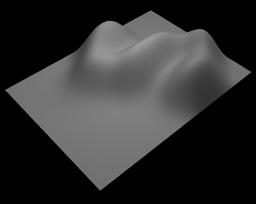
2 minute read
WIND & EROSIVE FORCES USING THE WIND TO CREATE A RESPONSIVE ARCHITECTURE
from AEOLIAN - AADRL
by Salim Hilles
Wind is the most influential factor in shaping the desert through a process known as aeolian. What is interesting is how the traces of these geological formations can be traced in their textures. Vector fields are visible in their surfaces, creating a visual graphic of the geometric formology sculpting the rock over time. To generate an understanding of how different objects react to the flow of wind and how sand particles would react in colliding with them. We attempt to achieve this level of analysis through the following simulations/experiments:
Vector Field
Advertisement
The aim of next experiment is to analyse the effect of vector fields with different geometric objects acting as colliders. These tests were conducted by creating formations composed in four basic shapes suitable for the task at hand, such as: linear formations, concave formations, convex formations, and wave formations (combining both concave and convex).
Particle Simulations
The aim of the experiment is to analyse the effect of sand particles colliding with formations composed of four three-dimensional shapes at different levels of inclination to generate an understanding of how the change in these parameters affects the macrobehavior of a desert.
Linear Formations
Vector Field Analysis
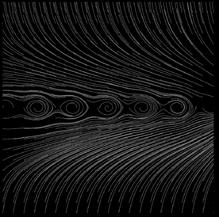
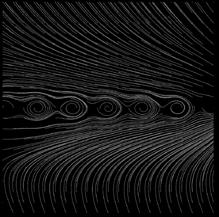

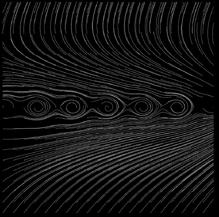
Linear collisions illustrates a vector field behaviour where the vectors motion forward is halted and shifted to a side. This collision strategy fails to consider the vector direction post-collision.
Particle Simulations Analysis
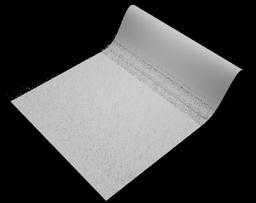

With a gradual inclination and declined obstacle, the particles are capable of compiling and rolling upwards, allowing an accumilation of particles that may climb up the obstacle. The more declined the surface the faster the particles accumulate and climb it. With an inclined obstacle at an acute angle, the particles are unable to climb the obstacle due to the surface leaning against the particle flow. However, neither strategy considers particle flow post collision, making all strategies at risk of particle accumulation over time.
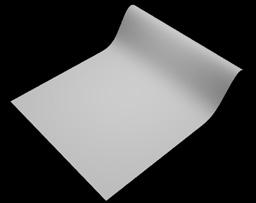
Concave Formations
Vector Field Analysis

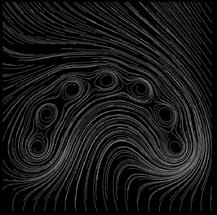


Concave collisions illustrates a vector field behaviour where the vectors motion forward accumulates inward. This collision strategy is capable of shifting the field outwards post collision.
Particle Simulations Analysis
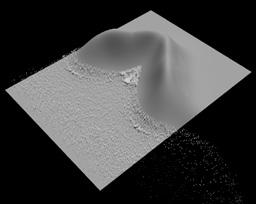
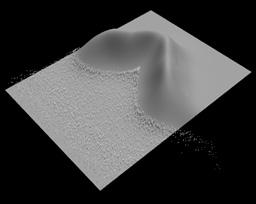
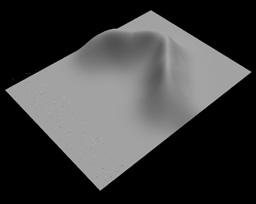
Concave formations are able to accumulate particles towards the centre and gradually shifting their direction out of the concave shape. A declined strategy is inefficient as particles easily move upwards due to its curvature in the middle. With an inclined obstacle at an acute angle, the particles are unable to climb the obstacle and are instead, shifted to the side. A declined formation could be used for strategies for harvesting particles, while the inclined formation shows a potential strategy for compiling and shifting particle flow.
Concave Formations
Vector Field Analysis

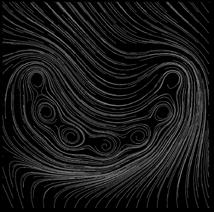

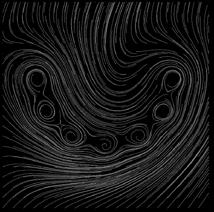
Linear collisions illustrates a vector field behaviour where the vectors motion forward is halted and shifted to a side. This collision strategy fails to consider the vector direction post-collision.
Particle Simulations Analysis
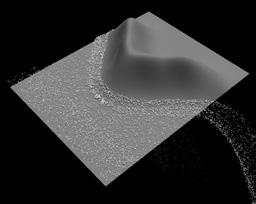
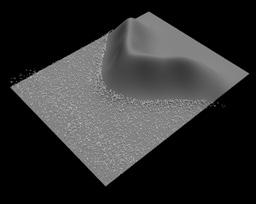

Convex Formations are able to split particles and divert them. A declined strategy carries particles upwards before splitting them whilst an inclined strategy maintains particles at the surface while splitting them and diverting them to the side. A declined formation could be used for strategies for lifting and spliting particles for transportation purposes, while an inclined formation could be used for purely splitting particles from a low elevation.
III) Declined Barrier II) Inclined Barrier
Wave Formations
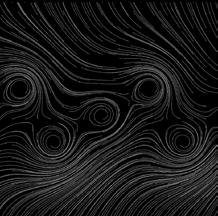
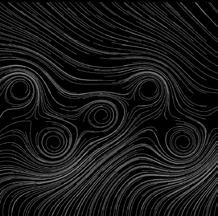
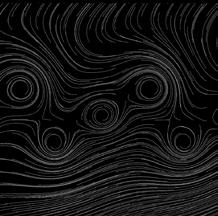
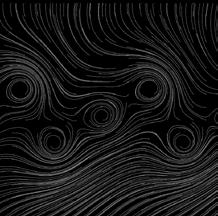
Vector Field Analysis
Linear collisions illustrates a vector field behaviour where the vectors motion forward is halted and shifted to a side. This collision strategy fails to consider the vector direction post-collision.
Particle Simulations Analysis
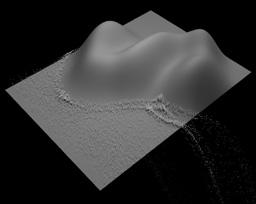
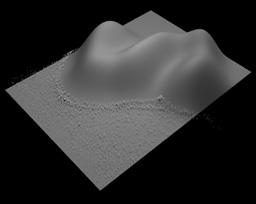
Wave Formations combine both aspects of concaved and convexed formations utilizing properties for accumulations and splitting. A declined strategy carries and splits particles as it is convexed, and accumulates and redirects particles as it is concaved. Whilst inclined, the particles create a smooth transition from splitting whilst it is convexed and accumulates shortly without lifting particles upwards before redirecting as it is concaved.
